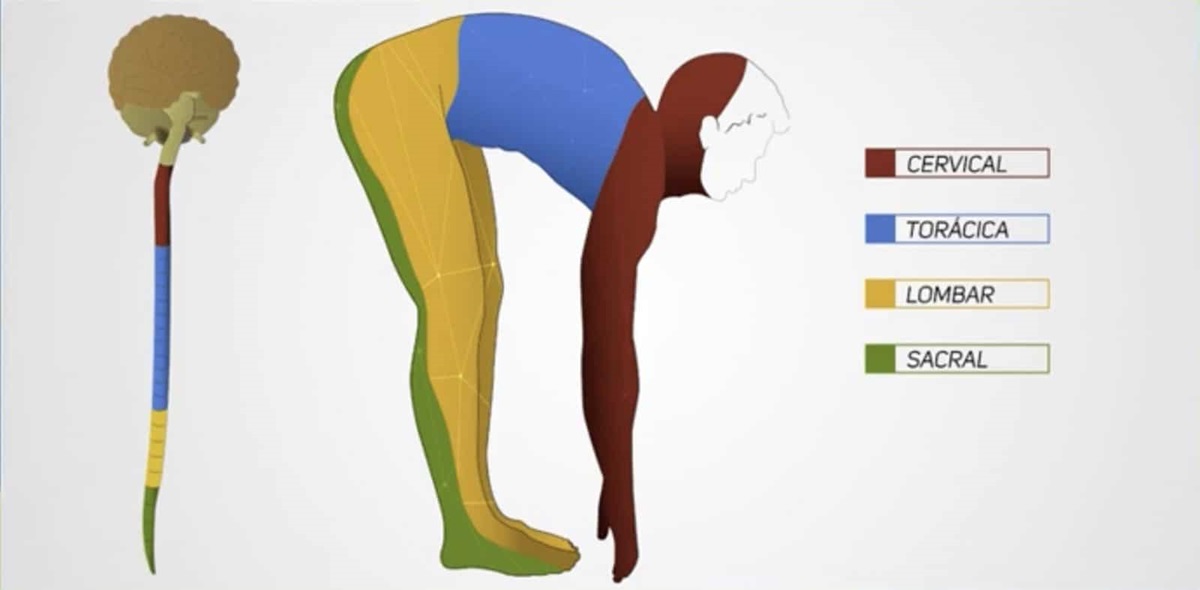In this post, we will talk about the psychopathic character structure. People with this adaptation have a natural talent for leading, guiding teams, and achieving common goals.
There are 5 Reichian character structures. Don’t be alarmed by their names. They are scientific names that have been maintained since they were created.
- Development of the psychopathic character structure
- The psychopathic emotional wound
- The relationship with the world
- Building the resource
- Physical characteristics of the psychopathic character structure
- Beware!
- Head
- Eyes
- Mouth of the psychopathic character structure
- Torso
- Hip
- Legs
- Psychopathic character structure in pain
- What not to expect
- What to expect
- The gifts of the psychopathic defense
- Variations of the psychopathic pattern
- Next steps
Development of the psychopathic character structure
The story of our development brings new sensations and neural pathways that we discover and use to survive in life.
Myelination is reaching the thoracic spine, which appears in blue in the image. The child begins to gain control over the torso. The parts that have already been myelinated are now gaining finer control.
While in the oral phase, the child used to put everything in their mouth randomly, in the psychopathic phase, they can now hold a fork, a spoon, a crayon, in a more controlled way, because they are improving the skills acquired. Torso control is a very important skill in the formation of the psychopathic defense mechanism.
This character defense begins developing from one and a half to two and a half years of age. At this stage,the child is now able to move away from the mother and interacct with other people. They start to walk and articulate what they want and even verbalize it.
Now, however, it is necessary to connect and “convince” other people, to be able to become important to them.
In this new phase, the child notices more people and learns from them. They start evaluating and expecting responses and reactions from all of them.
Children often seek feedback on their skills and accomplishments. ‘Did you see how high I jumped?’ Attention and acknowledgement of the child’s experience by the parents is crucial.
If the child’s natural curiosity, playfulness and impulses are discouraged or manipulated, it can have negative consequences.
The psychopathic emotional wound
At this moment, the psychopath’s core wound is developed. Sometimes they understand that if they do nothing, they will not be important. They cannot perceive themselves as important only for who they are. They believe that only what they do for people brings value to themselves.
The thought is “if I don’t do anything or if I do things the way I want, I have no value.”
Perhaps the child was often pushed or encouraged to be independent before they were actually ready. They may have experienced shaming if they needed help. This can lead to the unconscious belief that they won’t really get what they ask for, but will be manipulated or betrayed instead.
The child also becomes a performer, a fluid personality that moves with environments and events, and works with them to create their own safety and advantage.
So, this child starts to reprogram their reactions in order to do things and also evaluate what people do. This is because they understand that being is not the most important thing. The most important thing is what we do.
That’s why people with the psychopathic character structure seem to be colder. They avoid emotions and prefer reason. Things will come down to “What do I do to have value for this person? And what did they do to have value for me?” At this moment, the nervous system is shaping the child’s mind and body to react and survive in this new environment.
The relationship with the world
This is the period when parents have higher expectations for the child, such as interacting, saying “mommy” and “daddy,” singing “happy birthday,” etc. This is because in the oral phase, the child depended 100% on them and couldn’t communicate, only crying or sleeping all the time.
So, the parents think “the more you interact with me, the more I give you affection, love, attention”. But if the child understands that it is only in those moments that they receive affection, love and attention, they may feel like they are being manipulated.
This manifestation of the psychopathic character defense will also depend on some trauma that the child may experience in childhood, as several uncontrollable things will happen in their life, of any nature, such as a death, rejection, or something like that, which, happening at this stage, evidences their pain.
It’s important to remember that trauma for a child doesn’t have to be violence, an abusive relationship, but any event that they interpret negatively. Problems arise in the family, parents become busy, and it’s not enough for the child to just be cute; now they need to help with something, taking care of their toys, start doing things on their own, making things easier for mommy and daddy.
The problem is that this impression of “I need to do something” leads the child to feel manipulated. And then a dilemma arises: “how am I going to do something all the time, I have just learned to walk, I’m not ready yet”. And then the child often starts using tricks, combined with their new ability to get others to do things for them.
Building the resource
The child will try to meet their needs and avoid being manipulated, but in doing so, they may take on the opposite role and become manipulative.
Let’s say that the child wants something from their father but knows that if they go directly to him, he will say no. The child turns to their mother and asks her to mediate the request. In doing so, the child has created a pathway for negotiation – positioning people to achieve their goal. This ends up being a great resource for a psychopath, which can be used both to manipulate and to become a leader.
The psychopathic is very logical, extremely rational, but they do not retreat into their own mind and ignore the world, as in the schizoid character structure, nor do they seek the path of emotions as in the oral character structure.
If you do something for this person, they analyze what they will owe you or how they can ensure that when they need it, you will do it again. The psychopathic is always testing the people around them.
Physical characteristics of the psychopathic character structure
People with the psychopathic defense have much greater control from the waist up than from the waist down. Therefore, generally, physically, their body will be larger on top and smaller on the bottom, like an ‘inverted triangle.’ This model is repeated in many parts of the body, as we will see next.
The posture of a person with psychopathic character is ‘advanced forward’ because they observe the world in this way, with the intention to ‘move forward to interact and conquer.’ A clear example of this projection is Donald Trump. In any photo, he is always extending his hand to greet or with a more forward posture, ‘advancing onto people.’ This is his way of interacting with the world.
People with psychopathic adaptation have this energy. It creates an ‘atmosphere’ around this person, where they feel more comfortable to take up territory and gain control.
Returning to the body shape, an image that illustrates these characteristics well is the photo of Cristiano Ronaldo at the beginning of this post. Notice how he is extremely triangular. Look at the width of his shoulders and the width of his hips. You can clearly see a triangle in his torso.
Something interesting is that, in order to project himself even larger, Cristiano Ronaldo has his hands on his hips and opens his legs, occupying more space.
A person with the psychopathic structure tries to appear larger while seeking a base, combining the lower part with the upper part and appearing larger in the upper part of their body. Even though he is muscular, Cristiano’s legs are thin. And you can again see the triangular aspect by observing the proportion of his thigh to his calf and his shin.
Beware!
We are analyzing people with a greater predominance of a certain character structure, but no one is 100% one or the other.
In a body mind assessment, the most difficult character structure to identify is the psychopathic, because they are chameleons. If they need to play the role of a victim to get what they want, their body will have a more oral appearance, such as being chubby, for example. The psychopathic tends to hide behind other structures depending on they tend to emphasize: chameleons in their body and behavior.
The feeling that a psychopathic conveys is that they are going to dominate you, and their expression is as if they are measuring and evaluating you.
Head
Analyzing each part of the body separately, we will start with the shape of the head. Following the inverted triangle, the head is larger at the top and smaller at the bottom, This is seen more prominently in the region of the chin, which is almost always pointed.
We might think that almost everyone has a pointed chin, but that’s not the case. One thing is to have a chin smaller than your forehead, another thing is the angle from the forehead to the chin. Some people have a much more square or round face.
Eyes
In our assessment, for the eyes, we analyze much more the sensation and expression than the shape. It’s as if the psychopathic is evaluating and trying to control you. They convey this feeling because they have been manipulated before. In order not to be manipulated again, they need to evaluate the environment around them. This is either to manipulate back or to protect themselves. Their gaze is always scanning you and the surroundings. They can have cunning, intimidating or seducing eyes.
Mouth of the psychopathic character structure
In the mouth, it is also necessary to look for more expressions than the shape itself. The characteristic feature is the lopsided smile. This smile brings the feeling of two faces in one, one more open and cheerful, and the other closed. This happens because the psychopathic keeps more than one version inside themselves.
Torso
When analyzing the torso, the shoulder is much wider than the beginning of the hips, and repeats the triangular aspect. The identification of the psychopathic hip is challenging. They usually do not have a voluminous butt. The upper part of the body is larger than the lower part. The upper part of the hip tends to be slightly larger, too.
Hip
Their hip frequently conveys the feeling of being disjointed, as if the upper part belonged to one body and the lower part to another.
Legs
The thigh is larger than the calf, which is larger than the shin, following the inverted triangle. Their nervous system didn’t create many branches to send energy to the legs, so they are relatively weak.
Psychopathic character structure in pain
The psychopathic fears feeling manipulated betrayed, even if they do not complain or show it. When they do not feel manipulated, they are in their resource. They use their ability to articulate in a healthy way for themselves and others.
They have problems with their self-esteem because they need to feel special all the time and they have trust issues. To avoid manipulation, they try to control the world around them.
What not to expect
When interacting with a person of this character, do not expect emotions. Do not expect them to open their heart to you. If you ask how they are feeling, they will wonder what you will do with that piece information. Most of the time, they will say the minimum, just to satisfy you.
They don’t like to talk about their flaws, problems, or feelings, only about what they’re good at. For them, “feeling too much” is a flaw. They think that they cannot feel, only act. They always look for ways to be in the spotlight, to receive attention, to negotiate and manipulate the environment more easily, and to manage the expectations placed on him.
Don’t expect them to seek sensitivity, understand your way of feeling the world, or create ways to support you, because that’s not their skillset. If you demand that from a person with psychopathic structure, you will make them function worse, disrupting their relationship with the world. They are not bad; they just won’t follow the path of emotions.
What to expect
If there is a bad situation happening, he seeks a plan, people, resources, and ways to solve the situation. He works for practical results, and despite not caring about his own feelings, he may care about you.
He creates a good plan to get you out of the situation, but that doesn’t include listening to your emotions. Although he always finds different ways to solve each situation, remember that his legs are weak. In other words, he needs other people to do things.
They are very perceptive and good with words. They might say exactly what you want to hear if that benefits them.
The gifts of the psychopathic defense
Their ability is to talk, manipulate, and convince people to follow a plan. That’s why people with this structure are great leaders. When they’re using their gifts, meeting their needs, they use this to pursue big goals that help everyone around. They are very sensitive to issues of injustice and oppression and they are powerful speakers.
A psychopathic using his gifts can understand what is important to people, focusing on logic.
They use their ability to articulate positively or negatively, depending on whether one is in pain or resourcefulness.
But of course, there are also people who can manipulate in a negative way, use and deceive people. To have a psychopathic on your side, encourage them by praising their leadership skills and accomplishments.
You can stimulate them highlighting what they do, praising and valuing them. Psychopathics expect recognition, but not for who they are but for what they have done.
Variations of the psychopathic pattern
Three pattern variations of the structure show different behaviors, despite similar body shapes. These three variations of the psychopathic defense are:
- threatening, if you have the threatening type, you may believe the world is threatening and the only way to feel safe is through some form of aggression, hostility or argumentativeness. People perceive a hostile energy around you.
- seduction, you may try to get what you want through charm, seduction, or a flattering or overly polite way with people;
- victimization or withdrawal, putting himself as a victim to gain empathy and manipulate people’s reaction or withdrawing from unpleasant situations in a hostile way.
These three variations are visible by the presence of other character structures. If the psychopathic also has a strong oral structure, for example, they tend to play the victim. They won’t be very good at controlling by fear.
A psychopathic may not behave as expected; instead, they may act as a seducer or victim. An example is a child manipulating their mother saying that if she doesn’t do something, they will be sad.
It’s also interesting to consider that a person can transition between the adaptations. They start with one structure, switch to another if it doesn’t work, and do anything to achieve their goals. This is the chameleon behavior of the psychopathic structure.
Next steps
Did you see yourself in this character structure? You can also read about the schizoid, oral, masochist and rigid character structures.
We are a mix of five character structures with different intensities. Brazilian researchers created a method to measure the percentage of each structure in individuals. After finding out your combination, you will understand what problems you’ve been facing and how to solve them. You will receive clear instructions on how to manage and soften your character structures to make better decisions.
You will learn how to use your gifts to build a happier and healthier life. Schedule your free discovery session now.








